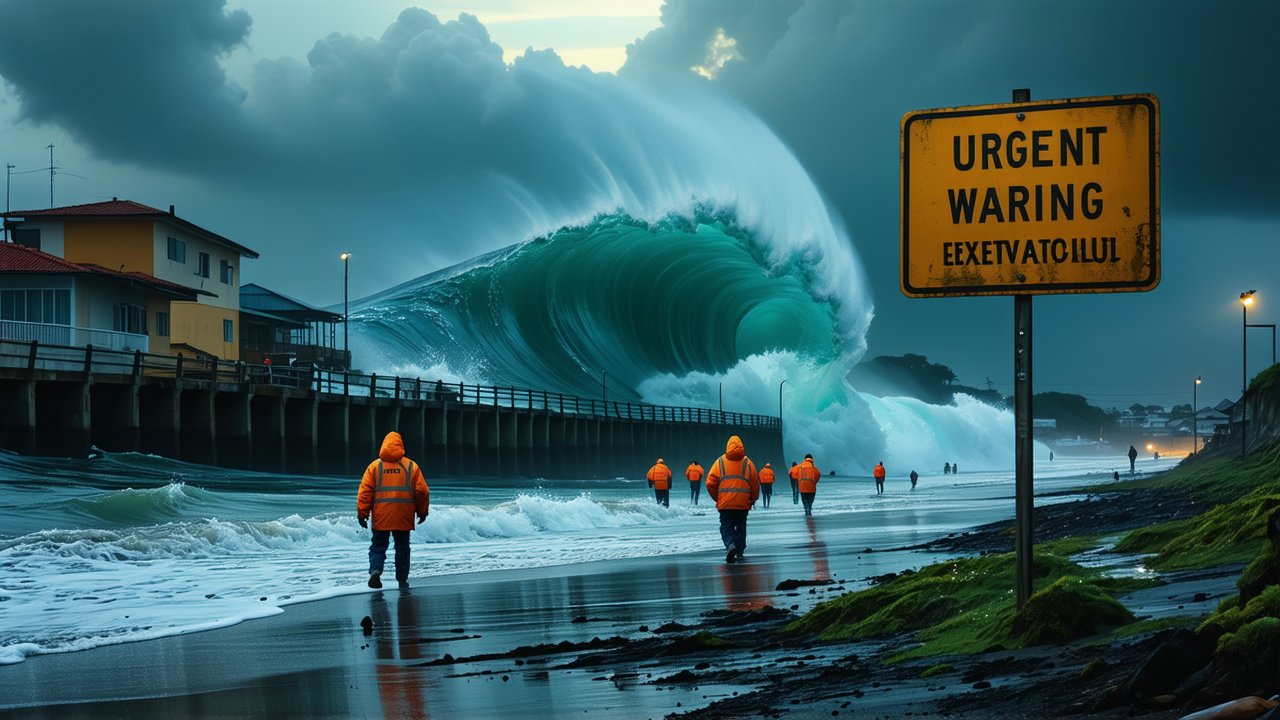Tsunami Expert Warns New Zealanders of Risks After M8.8 Earthquake Off Russia’s Kamchatka Coast
Tsunami Expert Warns New Zealanders of Risks After M8.8 Earthquake Off Russia’s Kamchatka Coast
Residents across New Zealand were urged to stay away from the water as a tsunami warning was issued following an 8.8-magnitude earthquake off the coast of Russia’s Kamchatka Peninsula. The event, which occurred on the previous day, sent shockwaves across the Pacific, triggering alerts in multiple countries and raising concerns for coastal communities in New Zealand.
Dr. Colin Whittaker, a tsunami expert and deputy head of civil and environmental engineering at the University of Auckland, emphasized the potential dangers of the approaching waves. While tsunamis may appear harmless in the open ocean, their behavior changes dramatically as they near land. 'In the deep ocean, a tsunami can travel as fast as a jetliner, but it’s not very scary,' he explained. 'It might only be of average height.' However, the real threat emerges when the waves reach shallow waters.
Dr. Whittaker warned that once tsunamis make landfall, they can become extremely dangerous. 'When a tsunami makes landfall, it’s just like a whole lot of water. Like a river flood.' The speed of the water increases significantly, with currents reaching several meters per second in shallow areas. This can lead to powerful surges and strong currents that pose serious risks to people near the shore.
At 6:30 a.m., New Zealanders were alerted to an updated tsunami warning, advising them to 'stay away from beaches, shorelines, harbours, rivers, and estuaries.' The warning remained in effect, with officials anticipating that the threat would persist for several hours.
Emergency management agencies reiterated that the risk is real and urged people to avoid the water entirely. 'Strong currents and surges can injure and drown people,' they said. Those in or near the sea were advised to move to higher ground immediately and stay away from the coast until the advisory was lifted.
The impact of the earthquake and resulting tsunami was not limited to New Zealand. In the United States and Japan, tsunami warnings have since been lifted, but countries such as Chile, Easter Island, and Colombia remain under alert, with evacuations ongoing along Chile’s coastline.
New Zealanders are being reminded to treat the threat seriously. 'The first currents and surges are unlikely to be the largest and are expected to continue over many hours,' officials said. 'The threat must be regarded as real until this advisory is cancelled.'
As the situation develops, experts and emergency services continue to monitor the situation closely, urging the public to remain vigilant and follow official advice.
